

Video by Patrick Connolly / GIF by Kyle Henke
08.31.16
Gymnastics might not be a child’s first choice when thinking about what sport to enroll in.
It doesn’t always have the glamour of a Friday night football game under stadium-level lights, or draw the sort of packed crowd that eagerly watches the drama unfold from the bleachers week after week.
But take a four-inch-wide balance beam and someone’s calloused hands swinging from a wincing set of uneven bars, add the Summer Olympics and a few American gold medals, and children start to see the glory.
Then the question becomes where to sign up, which is made trickier in Appalachia where gymnastics gyms can be few and far between.
“It’s rural,” said Adrianne Roettker, owner and head team coach of Southern Ohio Gymnastics Academy in Gallipolis, about an hour drive away from Athens. “I have people that have to drive 50 minutes to get here.“
Regardless of the distance an athlete’s parent may have to drive, gym owners and gymnastics coaches believe that so long as there is a desire, they will match it with a commitment to a sport they believe can change a child’s life.
“In areas like Columbus where they might have 10 gyms just within that one city, they have a lot more kids and can run a lot of kids through their programs,” programs,” said Liz Nulter, office manager and head team coach of Gymniks Gymnastics in Vienna, West Virginia, which is also about an hour drive from Athens. “But just here it’s sometimes really cool to see a kid that does travel 45 minutes to just to come to a 45 minute class, just to see how much they love (it), and they want to come that bad.”
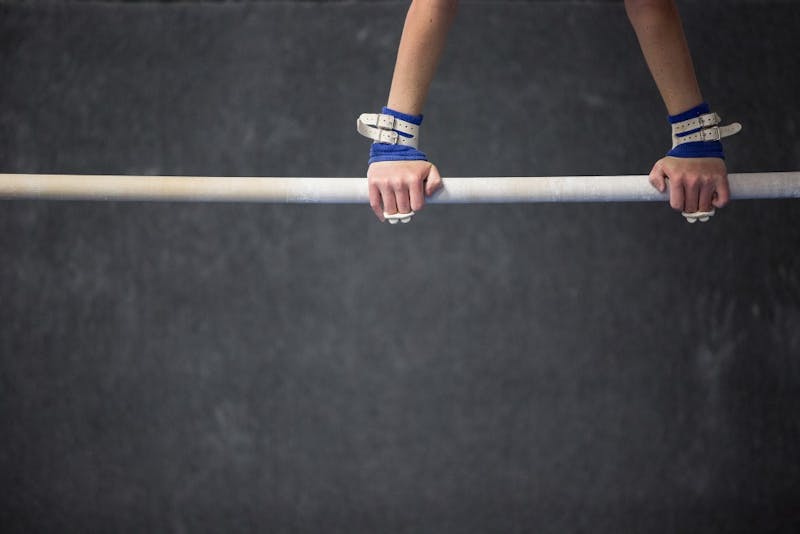
Alex Driehaus / Director of Photography
Shawna Goody, 15, practices on the uneven bars at Southern Ohio Gymnastics Academy in Gallipolis.
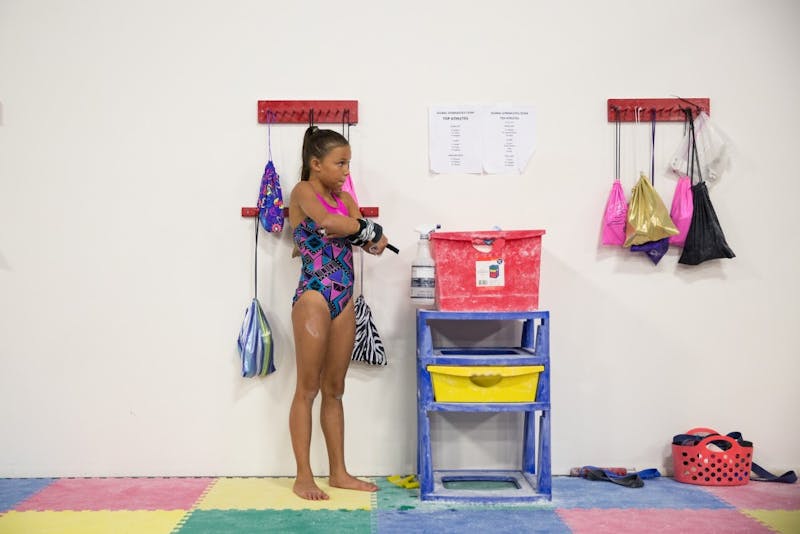
Alex Driehaus / Director of Photography
Natasha Woodgeard puts chalk on her hands before practicing on the uneven bars at Global Gymnastics Center in Athens.
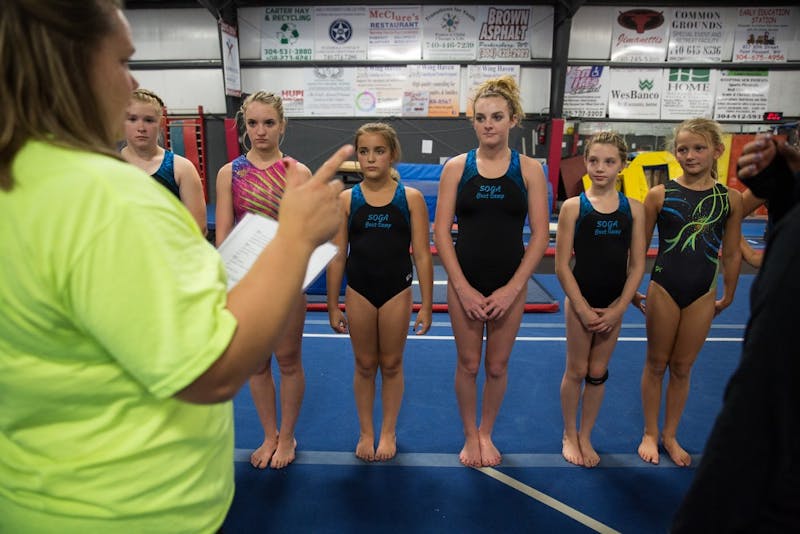
Alex Driehaus / Director of Photography
Gymnasts listen to instructions from their coach, Kim Runyon, before practice at Southern Ohio Gymnastics Academy in Gallipolis.
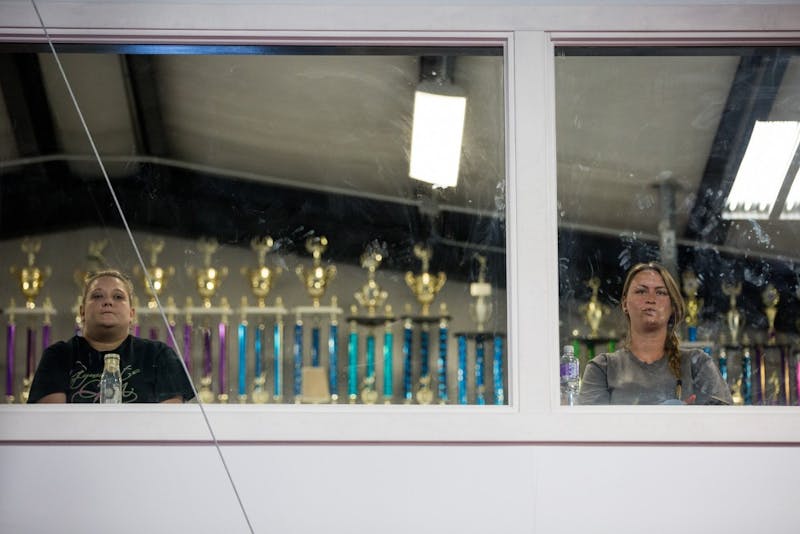
Alex Driehaus / Director of Photography
Parents watch from a second floor window as their children practice at Southern Ohio Gymnastics Academy in Gallipolis.
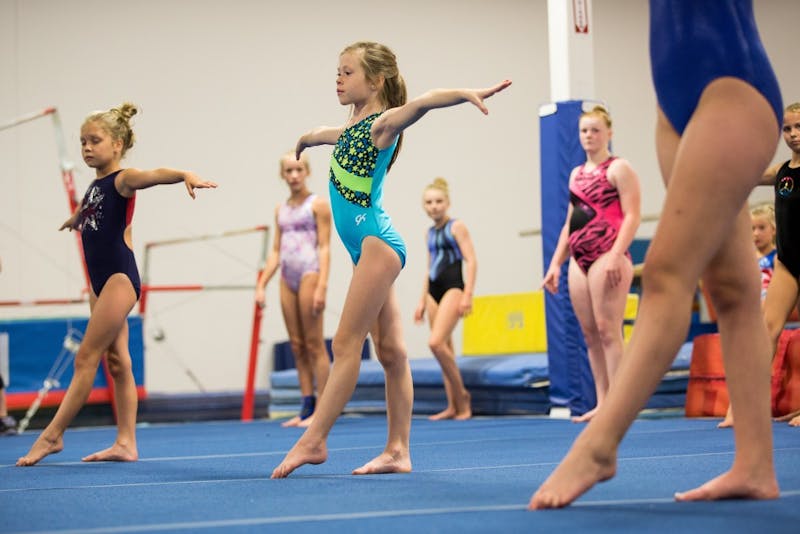
Alex Driehaus / Director of Photography
Eva Riley, center, does warmups with her teammates at the beginning of practice at Global Gymnastics Center in Athens.





At the Summer Olympics in Rio de Janeiro, the United States Gymnastics team brought home 12 medals (four gold, six silver and two bronze) between team finals and individuals events.
One of those gold medalists included Gabby Douglas, who trained just an hour and a half north of Athens at Buckeye Gymnastics prior to taking home a gold medal with the women’s team.
That kind of hardware-collecting pulls millions of viewers into a sport that largely goes untelevised on major networks during off years, and brings an increase in enrollees to gymnastics gyms as well.
Roettker said she saw about a 25 percent increase in enrollment following the London Summer Olympics, after the women’s gymnastics team won gold for the first time since the 1996 Summer Olympics in Atlanta.
“USA Gymnastics ... kind of (tries) to prepare for that,” said Esther Weibel, Ohio University gymnastics coach and team head coach at Global Gymnastics Center in Athens. “They send out all kinds of stuff to help with the programs and advice on what to do for that Olympic year.”
Still, artistic gymnastics can be intimidating.
The sport is divided between men and women, with men’s gymnastics involving six apparatuses (rings, floor exercise, vault, pommel horse, horizontal bar and parallel bars) and women’s gymnastics involving four (floor exercise, uneven bars, vault and beam).
Gymnasts like Douglas fall under the elite status — the highest level of gymnastics where athletes can compete internationally. Below that are the Junior Olympic levels, ranging from one to 10. All of those U.S. levels fall under USA Gymnastics’ governance umbrella.
Within the Junior Olympic program, though, levels one through five have mandated routines, making every routine in the country the same until the athletes surpass level five.
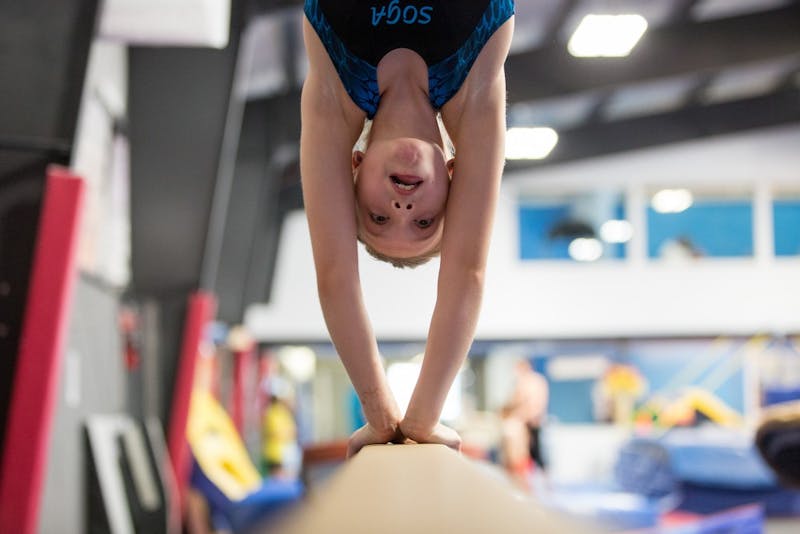
Alex Driehaus / Director of Photography
Arianna Buckley, 9, does a handstand on the balance beam at Southern Ohio Gymnastics Academy in Gallipolis.
In contrast, the “Xcel” program, previously known as P.R.E.P. Optional, is separated into five levels where athletes and coaches can customize their routines around certain requirements. That allows for more creativity and customization in a sport where a child may drop out by the time they hit middle school, said Roettker, Nulter and Shawn Wilson, owner of Global Gymnastics.
“We definitely keep girls more than we would have (through offering the Xcel program),” Weibel said.
Below the competitive level are also recreation classes, which focus more on skills such as staying in line and body awareness, and can include anything from toddlers and their parents who practice together or basic skills classes that go for about an hour once a week.
“That’s definitely where any kid that would be part of our team would learn the basics,” Nulter said. “We always pick them out of our rec program.”
Working up to the competitive level takes time — three to four hours each day for high-level athletes.
That time commitment is shared between gym owners, coaches, parents and athletes, who sometimes trade family time for hours spent on the mats, Nulter said.
For collegiate gymnasts not in school-sponsored varsity programs, the adjustment from a practice-heavy schedule to college life can be a bit jarring. Elizabeth Vulgamore, president of the OU club gymnastics team, said she went from practicing every day for four hours to two-hour practices once a week.
However, the team still has a large time commitment.
“College classes take so much more time than high school classes, and even though we are practicing much less, we have a fundraising opportunity, a community service opportunity — something to do with the team at least once a week as well,” Vulgamore, a senior studying exercise physiology, said.
Before switching to practicing at Global Gymnastics, the club team used to drive an hour from Athens to a gym in Lancaster, adding an extra two hours onto an already two-hour-long practice.
“It’s a hard transition (from high school to college gymnastics),” Weibel, who was on the OU team from 2009 to 2012, said.
“When you commit your life that much to something, it’s hard to just drop off and be done with it.”
It is not just a time commitment, but a financial one as well.
“Economics is different. We have to scale down our prices,” Roettker said of having a gym in Appalachia. “You’re not going to pay here what you would have to pay in the city.”
Team tuition costs depend on level and location, but can cost from $100 to $250 per month. That does not include costs to compete, team charges, leotards and other fees that may be on the side.
Nulter said gymnastics competition fees can be about $100, but those fees can include an entrance gift such as a T-shirt or leotard.
“It’s hard sometimes, especially when we’re picking a new team and we have to go over all of that stuff — that is my least favorite part of it,” Nulter said. “I always have a meeting ... just where I invite everyone that’s interested, and I go over, ‘This is how much a competition is, this is how much tuition is, and then you have a leotard, then you have to travel to each meet.’ ... That’s just how gymnastics is.”
For OU’s club team, which is co-ed but has traditionally leaned female, the gymnasts raise money to pay for their competition fees. They also pay a $30 fee upfront and $10 per practice at Global Gymnastics with Weibel.
"When you commit your life that much to something, it’s hard to just drop off and be done with it."
— Esther Weibel, OU club gymnastics coach, head team coach at Global Gymnastics.
“Gymnastics gyms are not big money makers. I’m not rich — I don’t intend to ever be — but I didn’t go into (it) for that,”
Roettker said. “You have to be passionate about the kids and want to see them (succeed).”
Nulter said the children coming through the recreation programs essentially pay for the majority of the gym’s operations and the gym “couldn’t do it on team alone.”
Some parents wind up spending thousands per year to put their children through gymnastics programs. Misti Goody, secretary at Southern Ohio Gymnastics Academy, said she works there to help pay for her two kids, Shawna and Devan, to participate in the sport.
She was first offered a job cleaning the gym, and Roettker then offered her a secretarial job. She says she does whatever she can to help out the gym, where she said she probably spends about $2,000 each a year on competitions and other gymnastics expenses.
“I even work on the weekends here sometimes, sometimes Saturday and Sunday, so there’s times that we’re here seven days out of the week, and it could be sometimes a month straight,” Goody said. “The most difficult times are when they’ve been here so much. ... It can be a little bit of a struggle.”
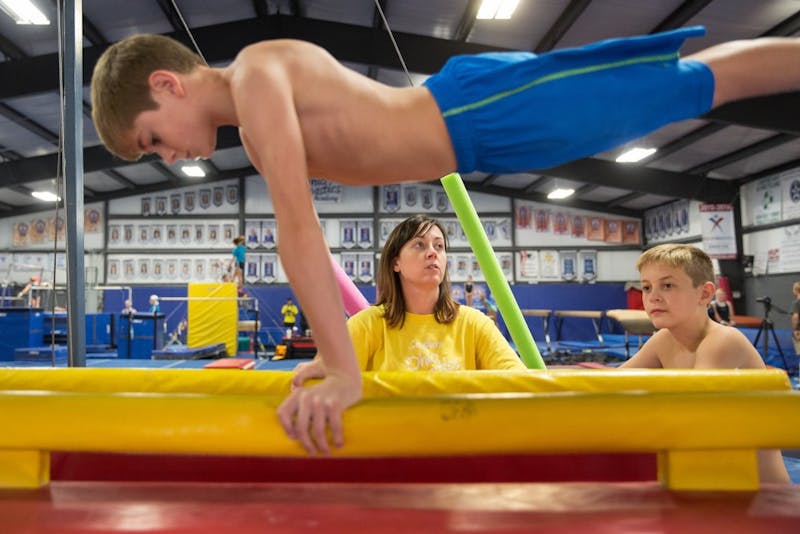
Alex Driehaus / Director of Photography
Matthew Kincaid, 12, practices on the parallel bars as his coach, Abbey Russell, and her son, Gabe Russell, 12, watch at Southern Ohio Gymnastics Academy in Gallipolis.
All gymnasts start with the basics, and work their way up to what they and their parents say are the many benefits that come with a dedication to the sport. Goody, for example, credits gymnastics with helping her son’s behavior.
Devan, 13, has attention-deficit/hyperactivity disorder and started practicing gymnastics while still on “quite a bit of medication,” Goody said, for both the disorder and to help him sleep.
“Now he’s completely off all of his ADHD medication, and now he has to take something to help him sleep every once in awhile, but we’re slowly getting him off of that too,” Goody said.
Plus, being a boy who puts long hours into a sport that can often seem dominated by girls can combat gender stereotypes, which Roettker said are a “drawback” in Appalachia.
“(Gymnastics) is just as good for boys as it is for girls,” Roettker said. “They’re the strongest men in the world, and it’s great for all boys, but especially when you get a boy that’s small and muscular and maybe can’t do football.”
And even if competing as a gymnast is not the athlete’s endgame, skills garnered from practice, such as flexibility and strength, can translate to other sports. Wilson cited one parent who credits her son’s success in soccer, football and other sports to his background in gymnastics.
“Whether it’s transferring over into another sport, building confidence or even just playing in the backyard or playing on the playground, there are a lot of physical benefits to it,” Wilson said.
Weibel said she hopes the presence of the gym — which moved back to Athens from Nelsonville in September 2015 — makes a difference throughout nearby communities, some of which she said don’t have a “great success rate as far as children graduating, going to college.”
“I think enrolling your kids in gymnastics teaches (them) responsibility and teaches that drive to perform and get better at things, and I think that being around this area with schools that are really struggling is hopefully going to be able to help,” Weibel said, adding that the sport personally helped her both academically and socially while growing up.
For children who lack “any awareness of their body,” Roettker said her passion is in providing a physical outlet for an area that may not be heavily populated with gyms. On top of that, there are other lessons to be learned from a sport that children might never be exposed to otherwise.
“I felt like children in Appalachia … deserve the kind of gymnastics that you get in a Columbus or Cincinnati,” Roettker said. “There is just a different level of training of the coaches and different philosophy, and I just wanted to see that happen here.”

GIF shot by Patrick Connolly / Director of Multimedia